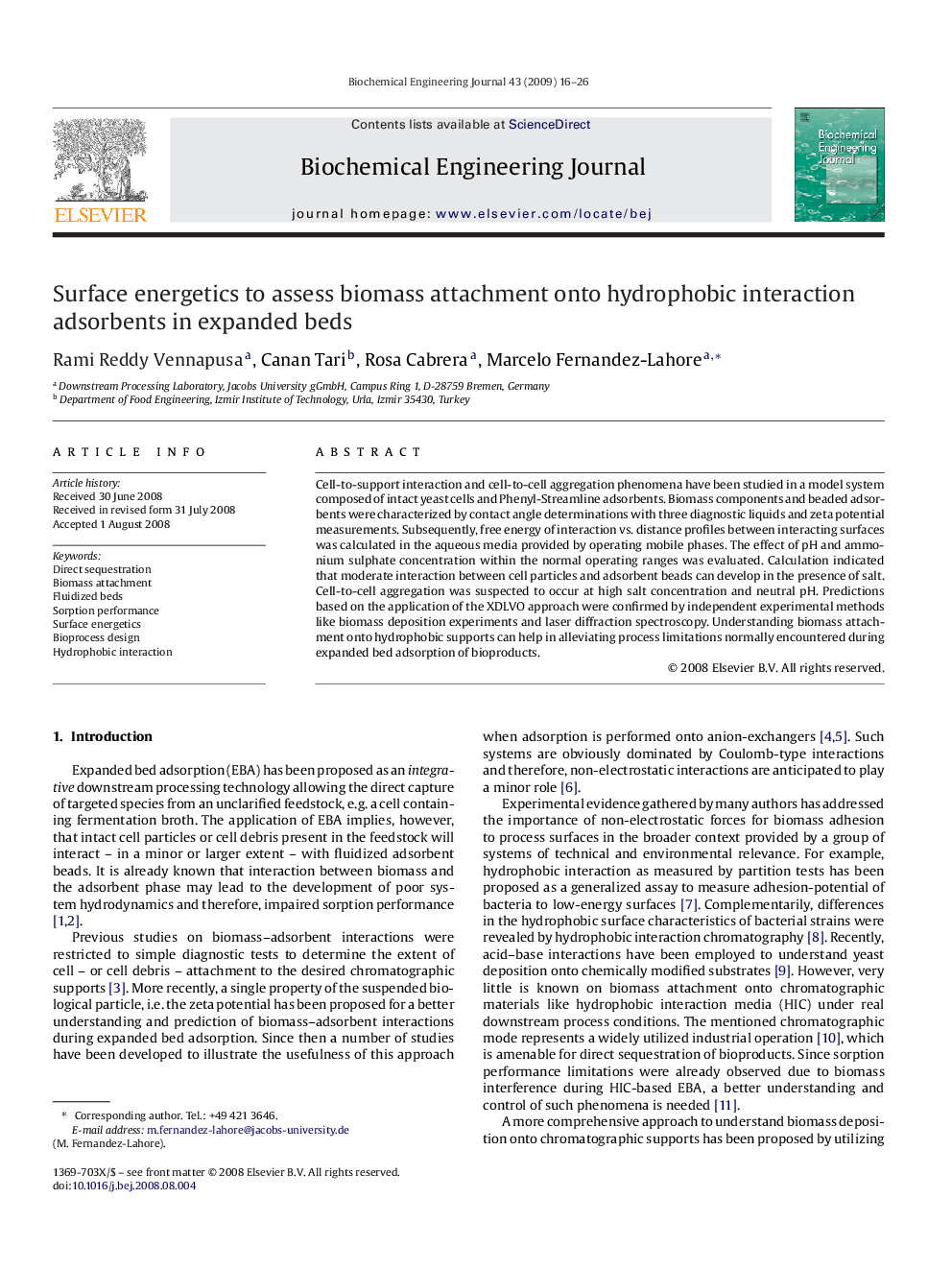| Article ID | Journal | Published Year | Pages | File Type |
|---|---|---|---|---|
| 4310 | Biochemical Engineering Journal | 2009 | 11 Pages |
Cell-to-support interaction and cell-to-cell aggregation phenomena have been studied in a model system composed of intact yeast cells and Phenyl-Streamline adsorbents. Biomass components and beaded adsorbents were characterized by contact angle determinations with three diagnostic liquids and zeta potential measurements. Subsequently, free energy of interaction vs. distance profiles between interacting surfaces was calculated in the aqueous media provided by operating mobile phases. The effect of pH and ammonium sulphate concentration within the normal operating ranges was evaluated. Calculation indicated that moderate interaction between cell particles and adsorbent beads can develop in the presence of salt. Cell-to-cell aggregation was suspected to occur at high salt concentration and neutral pH. Predictions based on the application of the XDLVO approach were confirmed by independent experimental methods like biomass deposition experiments and laser diffraction spectroscopy. Understanding biomass attachment onto hydrophobic supports can help in alleviating process limitations normally encountered during expanded bed adsorption of bioproducts.
